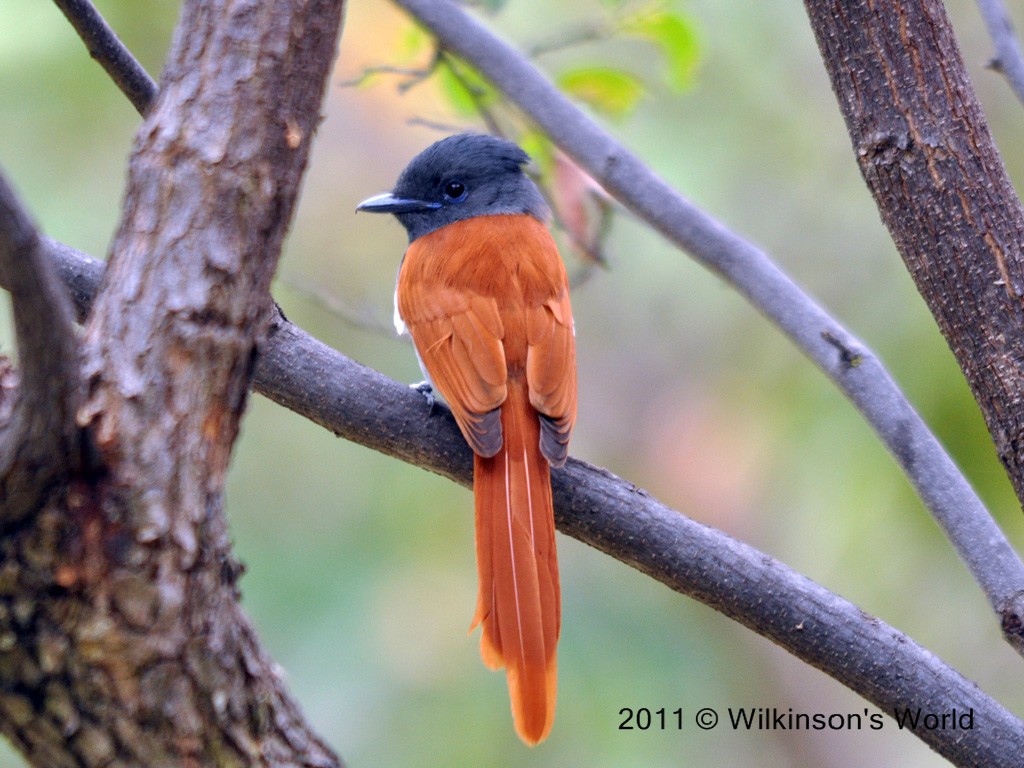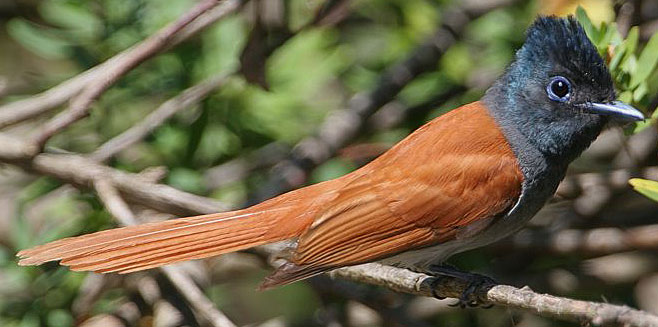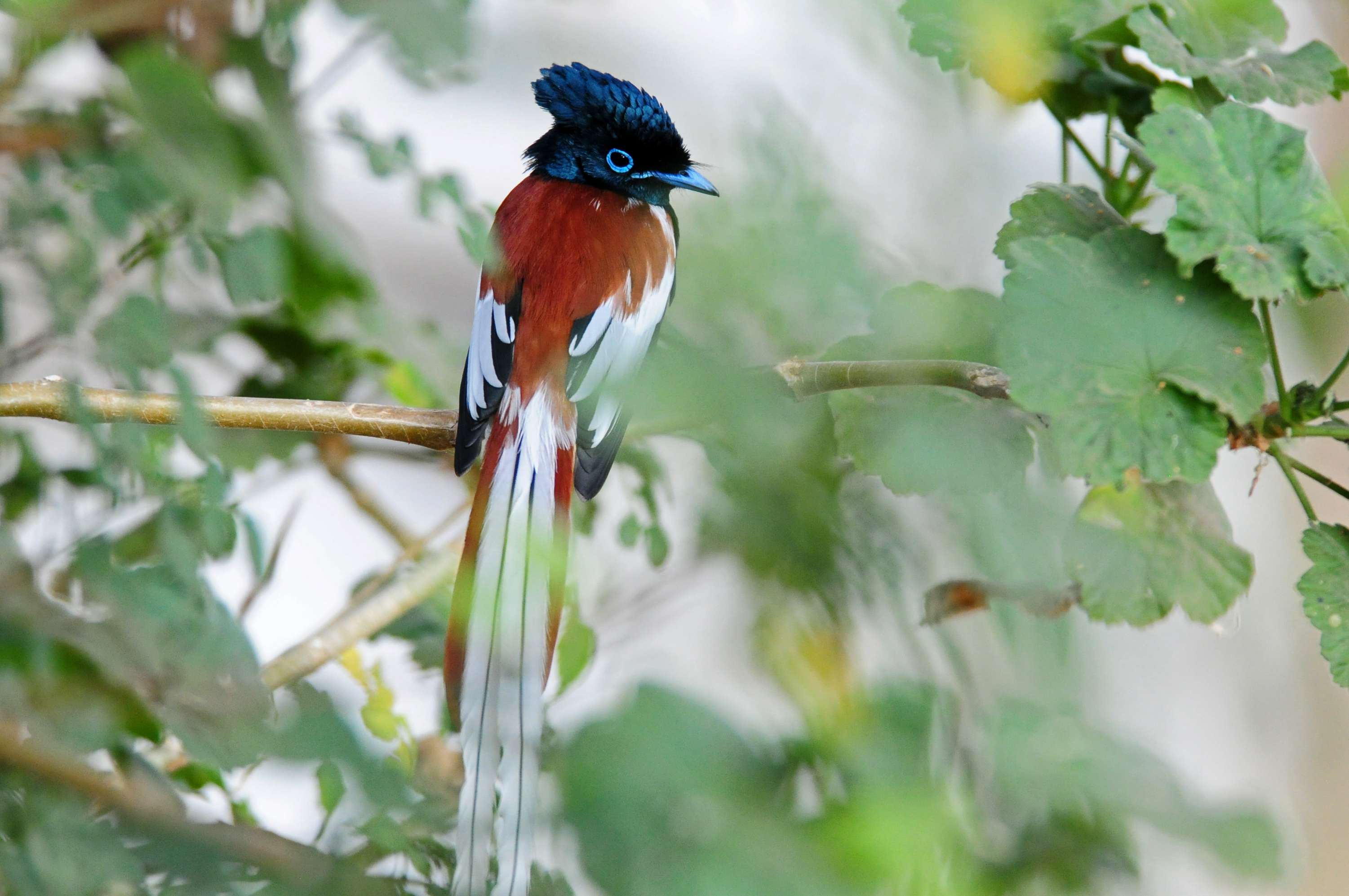
Terpsiphone viridis
TAXONOMY
Muscicapa cristata Gmelin, 1789, based on Brisson, 1760, Senegal.
Ten subspecies.
OTHER COMMON NAMES
French: Moucherolle de paradise; German: Graubrust-
Paradeisschnдpper; Spanish: Monarca Paraнso Africano.
PHYSICAL CHARACTERISTICS
Largest paradise-flycatcher in Africa, with tail that constitutes
two-thirds of its length. Large head and crest glossy blueblack,
eye surrounded by bright blue ring. Upperparts and
graduated, outer tail feathers russet-brown, underparts gray.
Most obvious markings are broad bar in each wing (white in
some races, black in others) and two white, central tail streamers,
which can be 3.5 in (9 cm) long in largest males. Females
similar, but smaller, and colors are less bold and glossy.
DISTRIBUTION
Widespread south of the Sahara, the only flycatcher found in
most of eastern and southern Africa.
HABITAT
Commonest flycatcher in Africa, found in almost all habitats
except arid zones. Equally at home in savanna woodland, open
forest, and plantations, prefers edges and avoids dense forest.
Birds also nest and feed in orchards, parks and well-established
gardens, up to 8,202 ft (2,500 m) in east Africa.
BEHAVIOR
Usually found in ones or twos, often tame and vocal but usually
unobtrusive. Long tail makes for a distinctive and graceful
flight, often slow and undulating, with tail streamers waving.
Some populations migrate within Africa, usually between habitats
during the dry season.
FEEDING ECOLOGY AND DIET
Glean insects from the foliage, flit among the leaves to catch
prey, or perch in wait for a passing insect, catching it in mid
air. Feed on caterpillars, beetles, moths, butterflies, flying ants
and termites, up to 1.2 in (3 cm).
REPRODUCTIVE BIOLOGY
Males patrol and defend territory with loud calls and songs, especially
at dawn and dusk. Tail streamers and crest play important
role in courtship display, combined with shivering wing
tips, calls, and sometimes ‘dancing’ on a perch. Neat, tight cup
nest is fixed with cobwebs to fork of a branch, into which two
or three creamy white, oval eggs are laid. Both parents incubate
eggs for about 15 days. Young stay in the nest for 11–15
days and remain dependent on the parents for a further week.
CONSERVATION STATUS
Common and widespread in a range of habitats.
SIGNIFICANCE TO HUMANS
None known.
Other popular Animals
Photo Gallery of - African paradise-flycatcher




 Animalia Life
Animalia Life